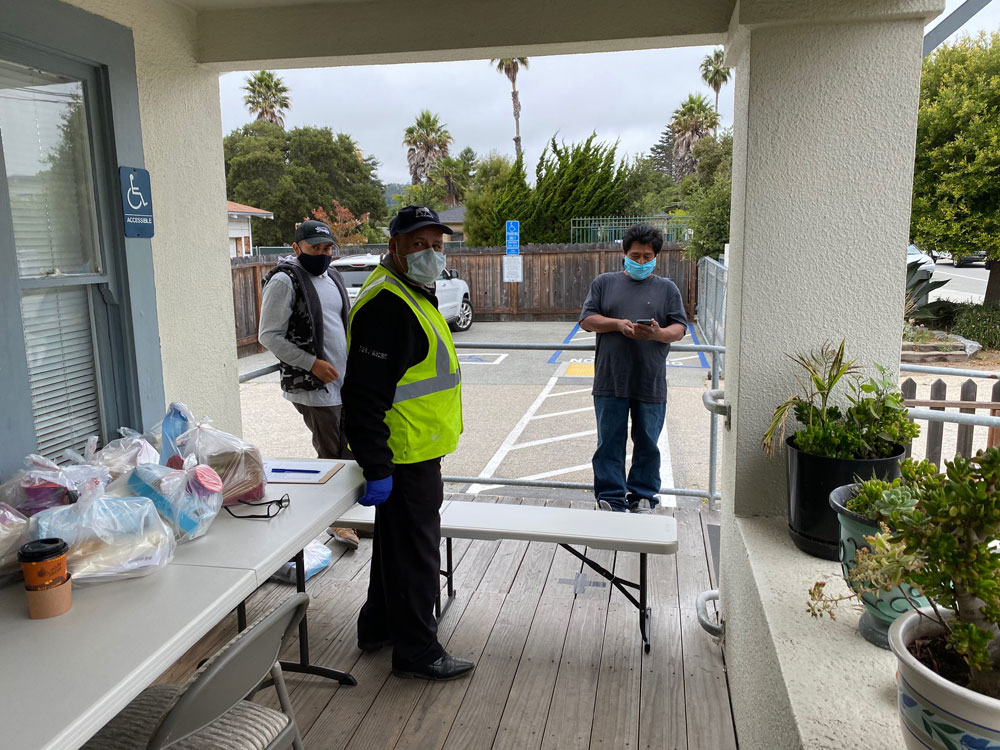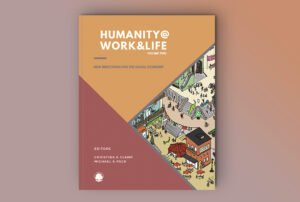
In May, we at NPQ noted that day laborers, who often find day jobs at street corners, “are at once the most and least visible people in the US.” A 2006 report found an estimated 117,600 people look for work on street corners on an average day. The report added, “Day laborers are primarily employed by homeowners/renters (49 percent) and construction contractors (43 percent). Their top five occupations include construction laborer, gardener and landscaper, painter, roofer, and drywall installer.”
Of course, this system is rife with power disparities between the (mostly white) homeowners and contractors who hire the workers and an often undocumented, primarily Latinx, workforce. In response, a network of at least 55 nonprofits has emerged to help organize and support these workers. And, while abuses—for example, wage theft—continue, the systems established by the network of nonprofits has helped tens of thousands of these workers earn enough to support themselves and their families.
But what does a nonprofit that acts as a hiring hall do when workers cannot congregate due to a pandemic?
Institutions both large, such as the University of Chicago, and small, like local arts nonprofits, have had to pivot as of late due to COVID-19, but few have had to pivot as sharply as the network of day laborer support nonprofits. Meeting the Moment, a new report authored by Nik Theodore and Agustin Chiarella at the Center for Urban Economic Development at the University of Illinois at Chicago, based on a survey of 50 of the 55 nonprofits affiliated with the National Day Laborer Organizing Network (NDLON), examines some of these changes.
Pre-publication, we wrote about some preliminary survey findings. Data from the final report illustrate some of the key new roles that nonprofits have adopted:
- Provide cash relief checks to unemployed day laborers: 88 percent
- Operate food pantry: 78 percent
- Distribute personal protective equipment (PPE): 90 percent
- Provide referrals to health clinics: 88 percent
- Help people apply for other cash assistance: 80 percent
Needless to say, the above relief functions were not part of the typical workflow of these support nonprofits. As Luz Maria Fuentes, who works at the Day Workers Center of Santa Cruz, a program of the county’s Community Action Board, says, the work of their center has changed drastically as a result of the pandemic.
“It is no longer [just] an employment center,” Fuentes notes. “It is now mental health. We get support for each other. ‘Who do I tell my story to?’ Bill, food, or rent—making those hard decisions and always be behind on something. They have so much going at the moment that even though they need the job, they need to deal with the kid, or the hot spot, or the computer broke, or the spouse is sick. Those are the needs we are encountering.”

Yet as needs change dramatically, the day laborers still need income. In terms of nonprofits’ core function of connecting people and work, Theodore and Chiarella detail the many adjustments that nonprofits supporting day laborers have had to make on the fly:
In terms of fulfilling their more traditional roles in providing employment-related services, worker centers have responded to pandemic conditions by quickly developing or expanding “virtual hiring halls.” With most employment-dispatch functions shuttered by the pandemic, and with employers and workers needing ways to safely arrange hiring, online platforms have replaced, for the time being at least, in-person hiring halls. As with conventional worker center employment dispatch, virtual hiring halls do not charge fees to workers or employers, and they help maintain minimum wages and workplace standards in a sector where the nonpayment of wages and other abuses are widespread. Because wage theft is so common, especially for day laborers securing work at informal hiring sites, 76 percent of worker centers are continuing to provide wage-recovery services.
Theodore and Chiarella also underscore the internal nonprofit planning required to shift. Accordingly, they report, “Two-thirds of worker centers (66 percent) have developed workplans to specifically respond to the pandemic and its impacts on immigrant employment and public health. Within these plans the most common priorities are increasing staff (47 percent), expanding emergency cash assistance programs (41 percent), strengthening community organizing (38 percent), providing PPE (38 percent), food assistance (34 percent), expanding training programs (31 percent), and developing new programming (31 percent). Other priorities include making equipment purchases (22 percent), making facilities improvements (19 percent), and conducting research (9 percent).”
Currently, as NPQ has covered, NDLON is engaging in a campaign to raise $62.5 million to provide long-term, multi-year support for day laborers and day laborer nonprofit support centers.
One Center’s Story: The Day Workers Center of Santa Cruz
The study provided by Theodore and Chiarella provides very important national data, but to understand how these changes filter down to individual nonprofits, we interviewed two staff members of one of the centers in the NDLON network, the Day Workers Center of Santa Cruz.
The Center, according to its director, Maria Rodriguez-Castillo, was founded about six years ago. Before the pandemic, there were 300 to 400 job matches per month—maybe 500 in a good month. In the March and April of this year, that number plummeted to about five per week. The numbers still are not up to pre-pandemic levels, but the level of retooling has been impressive.
As Rodriguez-Castillo details, this required deep and extensive outreach to area employers through both email and social media. Other modifications were also required. The Day Workers Center had never done food distribution or check dispatching before. Now it had to do so, but the pandemic created not just the need for these services, but also new health risks.
Sign up for our free newsletters
Subscribe to NPQ's newsletters to have our top stories delivered directly to your inbox.
By signing up, you agree to our privacy policy and terms of use, and to receive messages from NPQ and our partners.
“We had to put a new door with plexiglass in order for us to handle any food distribution or check dispatching through a hole in the door,” she notes.
Providing services in this way created cultural challenges. As Rodriguez-Castillo explains, in the Latinx community, when someone comes to your house, the norm is, “This is your home.” The expectation is for the guest to be invited in and treated as part of the household. But now, COVID-19 makes this impossible. The rule instead has become: “Sorry, you can’t come in. You have to keep your distance.” This, she says, can be read by many within the Latinx community as engaging in rude behavior.
Now, Fuentes concedes, “We only dispatch and accept orders on phone or online. With workers, we’ll leave the job, with a facemask and description, outside. General assemblies are now via Zoom weekly. It is an ongoing effort to get everyone on board.”
As Fuentes details, it took a lot of effort to move over to Zoom. For one, glitches are common; a considerable portion of meeting time can be taken up with tech issues—and not just technical ones, like training people to use cameras properly. Some of the issues are cultural. For example, as Fuentes points out, Zoom sessions and webcams can be invasive. Many day laborers don’t have a good space for being on camera “because they are living in a closet or renting a couch.”
From a staff perspective, Fuentes notes the shift to remote work has made dispatching work feel more like office work (whether done from the office or remotely from home).
“Before it was more hands-on with the participants,” she notes. Now, “everything is so much paperwork,” marked by constant emails and “Zoom meeting after Zoom meeting.”
Retooling for the Future
Despite all of the challenges, Rodriguez-Castillo and Fuentes have seen lessons learned from working remotely that might prove lasting.
“We see our use of time as being very productive,” Fuentes says. “We used to have a large group of jornaleros [day laborers] who would gather early at the center. We would have 20 workers by 7:30. By nine, they would be dispatched.” Whoever was left, she adds, would participate in other training activities offered by the center.
Now, she notes, as an employment center, “checking in by phone, it is working perfectly. If the previous employer cancelled, they I say I’m available. Early in the morning, they are logging in. So that’s good.”
Still, Fuentes observes, “In order to build a community among them, we need to have them in person, but maybe not every single day.” For example, maybe the center would ask people to come in on specific days—such as Wednesday, when the center offers leadership building workshops. “Or for whoever wants to take English as a Second Language, we’ll have that on another day.”
Fuentes adds, “Not necessarily every day having the workers here is beneficial, but it is their social time. As human beings we all need that.”
Indeed, the impact of the social isolation is evident. Day laborers are often physically separate from their families, many of whom live in their country of origin. This clearly heightens the degree of social isolation.
Rodriguez-Castillo mentions that one day three volunteers came in to handle a piece of furniture.
“You should have seen them,” she says. “It was like three children on the playground. It was beautiful to see the interaction.” Beforehand, when those same workers came into the center daily, “they wouldn’t bother to exchange words.”
The bottom line, Rodriguez-Castillo concludes, “There is a need to have workers at a place, not necessarily every day, but to keep building capacity.”











